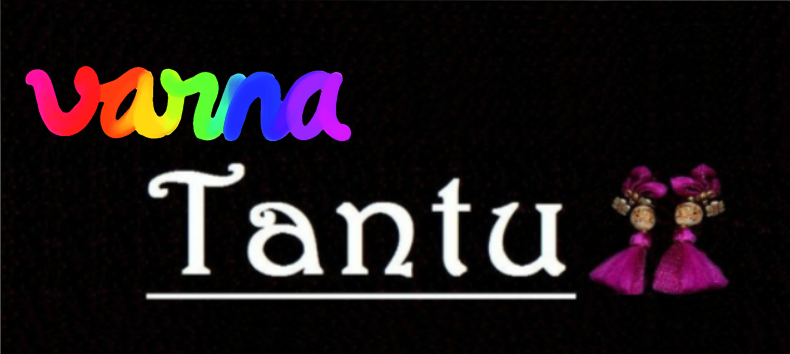Aho! Namaste Tantu bandhava: (=relatives in Sanskrit)!
There are lots of organizing ideas over internet for making sewing more easy. They are so exciting that I was always willing to have my ‘various design kits’ to be organized as I saw! Today I will show a very simple method of organizing a basic sewing kit.
Since time immemorial, I have collected every box (small to large), newspapers, interesting paper piece, plastic bottles, fabric paint bottles, small perfume bottles, chocolate wrappers and so on thinking that it will be of use one day 😀 I wonder if I have ever thrown anything as waste 😛 And thank God! I have succeeded in proving that my precious collections are really of use! This project is one among them.
DIY BSK: Basic Sewing Kit
Time required: Maximum 1 1/2 hours
Difficulty level: Very easy
Cost: Almost nothing
Requirements:
- a plastic case and corrugated packaging box of a mobile phone. I didn’t have mobile phone’s box. Instead, I used a hard disc box of the same size I wanted.
- 2-3 plain A4 sheets or an A3 sheet. Thick Handmade designed sheets can also be used.
- Paper adhesive (glue)
- Scissors
- Colour pens and highlighters
Making
I used this handsome case for my BSK.
 I planned how to use those awesome compartments.
I planned how to use those awesome compartments.
 I was so happy! The case was made to measure for my BSK only! It’s left most slot accommodated tape measure and marking chalk. The smallest cabin was perfect for machine needles. Remaining large area included hand needle boxes, ball pin case, needle threaders, small scissors, and a bobbin-spool set.
I was so happy! The case was made to measure for my BSK only! It’s left most slot accommodated tape measure and marking chalk. The smallest cabin was perfect for machine needles. Remaining large area included hand needle boxes, ball pin case, needle threaders, small scissors, and a bobbin-spool set.
Container Box presentation
I covered the corrugated box with plain papers and drew some lines.
How to cover a box?
I am explaining this for the beginners:
I placed the box over an A4 sheet as shown.
I folded the paper around the box and creased the edges as shown.
I glued this paper to another A4 sheet as shown. This step is not required for A3 sheet.
I creased the second paper also as in the first paper.
I cut the extra parts in the folds as shown.
I wrapped the paper completely according to the fold lines. I glued wherever necessary. Then, I glue finished the bottom folds neatly as shown.
I glued and attached the rounded cut parts to the flap.
I had covered the box. I could slide my sewing kit into this box. Whenever required, the kit is pulled out.
Designing
I chose a quick design. I traced the outlines of all the tools on the box top in their respective places.
I coloured a few parts in the drawing. Box is ready! Below is the top view of my basic sewing kit. How’s it?
 It’s time to leave for now. You may leave a comment in appreciation, improvement or suggestion. Non blogger readers, please note, you may rate the post instead of like. Your like will not be activated. Like button is active only for bloggers and Gravatar users. Thank you so much for your wonderful reaction through words, phone calls, comments, e mails and likes 🙂
It’s time to leave for now. You may leave a comment in appreciation, improvement or suggestion. Non blogger readers, please note, you may rate the post instead of like. Your like will not be activated. Like button is active only for bloggers and Gravatar users. Thank you so much for your wonderful reaction through words, phone calls, comments, e mails and likes 🙂
Take care!
Bye until the next post!






















I just loved the idea of you tracing the objects on the cover.Very practical and neat one!!
Thank you very much Manu attige 🙂 I am glad that you liked 🙂 Yes, I made it with a simplest design. This design also serves as a guide to locate those tools. Visit again! Bye!
Wonderful designs there Sindhu. Went thru some of the posts and am impressed by your talent. Keep up the good work. Will keep coming back to read more.
Thanks for stopping by and for your compliments Liju 🙂 Please visit again!
Great idea! Your blogs are very interesting.
plz like my fb page https://www.facebook.com/InterestingThingsonEarth
Thanks a lot for stopping by and leaving a word of encouragement!
Thanks for the link, liked your page 🙂